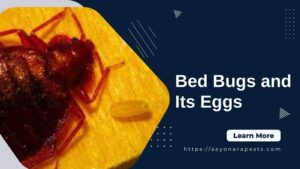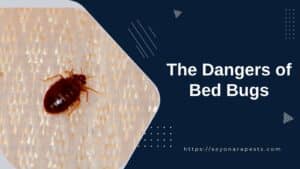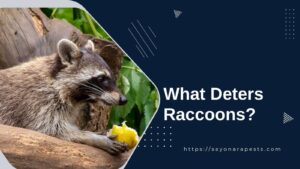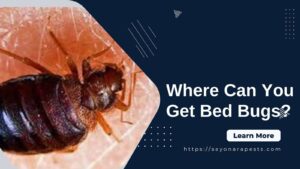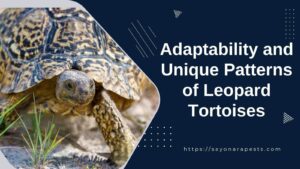Tortoises, those mysterious reptiles that move through the world at their own slow pace, have long been interesting to both scientists and nature lovers.
Their interesting habits, like how they build their nests, hunt for food, and interact with each other, have been studied a lot over the years. But it’s only been in recent years that researchers have learned how much genetic factors affect tortoise behavior.
This has shown them a labyrinth of complexity that both confuses and intrigues them. The role of genetics in tortoise behavior is not just a random thread; it is a key part of their survival and conservation efforts.
With each new study, the mysterious dance between genes and behavior gets more complicated. This makes us want to figure out the secrets hidden in their ancient genomes and find out how they move.
As we go on this journey, we will learn more about the genetic factors that affect how tortoises act. This will shed light on a realm where nature’s blueprint shows an amazing picture of adaptation and resilience.
Prepare for a trip into the mysterious world of genetic tortoise behavior, where the limits of what we know is pushed, and the mystery of how nature works is written large.
Background on Tortoise Behavior
Tortoises are fascinating animals that belong to the reptile kingdom. They do a lot of different things that help them live and adapt to different places.
Understanding the details of how tortoises act is important not only to satisfy our own curiosity but also to protect and keep these amazing animals alive.
A complete look at tortoise behavior looks at important things like eating, mating, and hibernating. This shows how they fit into the ecosystem and gives us important information about their unique lives.
Feeding is one of the most important things tortoises do because it affects their growth, health, and ability to live. These herbivorous reptiles have many different ways to eat, depending on where they live and what food is available.
Some species of tortoise are known to be grazers that love to eat grasses and other leafy plants. Other species, on the other hand, are known to be browsers that love to eat woody plants and shrubs.
This difference in food preferences shows how well tortoises can adapt to different environments and how important a well-balanced diet is for their long-term health.
Tortoise mating is a fascinating part of their lives that involves a lot of complicated rituals and displays. During mating season, male tortoises compete with each other to get the attention of females.
They do this by acting out elaborate courtship rituals. These rituals often include head bobbing, shell bumping, and other aggressive moves to show who is in charge and gets a chance to mate.
Males can be very competitive, which can lead to impressive fights that show how strong and determined these ancient reptiles are.
Understanding how tortoises mate gives us important information about their ability to have healthy offspring. It also helps us come up with good ways to protect them and keep their numbers at a healthy level.
The ability of tortoises to go into hibernation is a remarkable adaptation that helps them survive in harsh environments. Tortoises go into a state called brumation or hibernation when the winters are cold or there isn’t enough food.
During this time, their metabolisms slow down a lot. Tortoises can save energy and go for long periods without eating by slowing down their metabolism. This amazing change in their bodies lets them live in places that aren’t very friendly.
This helps them stay alive until better conditions come along. Understanding what makes tortoises go into hibernation, how long it lasts, and what changes happen to their bodies during this time is important for conservation efforts because it helps create suitable habitats and use the right management practices.
When it comes to saving tortoises, you can’t say enough about how important it is to know how they act. By learning how they eat, researchers and conservationists can come up with plans to protect important food sources and deal with threats like habitat loss or invasive species.
Knowing how tortoises mate is important for finding problems with reproduction and making sure there is genetic diversity in tortoise populations. It also helps with putting in place effective conservation measures to protect breeding grounds and lessen the effects on people.
Also, understanding the details of hibernation makes it possible to create good places for animals to spend the winter and come up with conservation plans that keep people from disturbing them during important times.
In the end, conservationists who know a lot about how tortoises act are better able to make decisions and take actions that will help protect these amazing reptiles for future generations.
In a broader sense, tortoise behavior has many different aspects, such as eating, mating, and going to sleep for the winter.
Tortoises are able to adapt to different environments because they have different ways of eating, and their complicated mating rituals tell us about how well they reproduce and how populations change over time.
Also, the ability to hibernate is an amazing adaptation that helps tortoises live in harsh environments.
Understanding these behaviors is important for conservation efforts because it helps come up with good plans to protect habitats, make sure animals can have healthy babies, and make the right conditions for hibernation.
By learning more about how tortoises act, we not only gain a deeper appreciation for these amazing animals, but we also gain the knowledge we need to keep and protect them when the environment makes it hard to do so.
Genetic Factors Affecting Tortoise Behavior
For a full understanding of what makes tortoises act the way they do, it’s important to look at how their genes and behaviors interact with each other. The way a tortoise acts is largely determined by its genes.
This includes how it reacts to things in its environment, how it acts with other animals, and how it acts in general. Through studying genetic factors, we can figure out the fascinating ways in which the behavior of tortoises within and between populations varies.
Genetic Influence
The traits that tortoises inherit are a big part of how their genes affect how they act. This is done through the transfer of genetic material from one generation to the next.
Inherited traits can include a wide range of behaviors, such as the level of aggression, how to find food, how to mate, and how to react to threats. Tortoises have these traits written into their DNA, which gives us a guide to how they act.
Researchers can learn how much genetics affect individual differences in a population by looking at how certain behaviors are passed down from parent to child.
Epigenetic Factors
Epigenetic factors are also very important in how tortoises act. Epigenetics is the study of changes to the genome that do not change the DNA sequence but do change how genes are expressed.
Several things in the environment, like temperature, nutrition, and social interactions, can affect these changes. Epigenetic changes can happen to tortoises during their early stages of development.
These changes could last for the rest of their lives and have a big effect on how they act. Studies have shown, for example, that the temperature at which tortoise eggs are incubated can affect the number of male and female hatchlings.
This means that male and female hatchlings behave differently.
Genetic Variation Within and Between Populations
Tortoise behavior is also different because there is genetic variation within and between populations. People in a population have different genetic variations, called alleles, that can affect how they act.
Some alleles can make certain personality traits stronger, while others can make them weaker or change them. This genetic diversity within a population makes it easier for people to adapt and stay strong when the environment changes.
Also, genetic differences between different populations of tortoises can lead to different behaviors, such as different ways of finding food or ways of getting along with others.
Understanding these differences can teach us a lot about how tortoises have changed over time and how they interact with their environment.
In the end, the way tortoises act is affected by a complicated mix of genetic factors. Tortoises have a wide range of behaviors because of inherited traits, epigenetic factors, and genetic differences within and between populations.
Scientists can figure out how tortoises behave by doing a lot of research and investigation. This helps them understand how they adapt to their environment, how they interact with each other, and how they respond to their surroundings.
By learning about these genetic factors, we can get a better idea of how complicated the relationship is between a reptile’s genes and how it acts.
Implications for Conservation
Understanding how tortoise behavior is affected by their genes is important for conservation efforts.
Conservationists can learn important things about tortoise populations and how to keep them safe by looking into the complicated link between genetics and behavior.
This information is very important because it gives us a better understanding of these beautiful animals and lets us make and use more effective plans to protect them.
Identification of Genetically Distinct Populations
Understanding how genes affect how tortoises act is one of the most important things that can be done with this knowledge.
Genetic studies can tell us a lot about the genetic differences between tortoise populations and between tortoise populations themselves.
Scientists can find different genetic clusters, which may represent different populations, by looking at the genes of different groups.
This information is important for effective conservation planning because it helps conservationists find and rank genetically different groups that may need different management strategies to stay alive.
Understanding How Genetic Factors Influence Behavior in Captivity
Another important conservation implication is learning how genetic factors affect behavior in captivity. Tortoises are often kept in zoos, research facilities, or as pets.
Conservationists can make better rules for the care and management of captive tortoises by looking at the genetic factors that affect how they act.
For example, some genetic traits may make tortoises more likely to act in certain ways, like being aggressive or reacting to stress.
By understanding these genetic factors, caretakers can give captive tortoises the right environments and stimuli to help them stay healthy and act like themselves.
Developing Breeding Programs to Conserve Genetically Unique Populations
Also, knowing how genetics affect how tortoises act can help create breeding programs that will help keep genetically different populations alive.
When a population is at risk of going extinct because its habitat is being destroyed or because of other threats, captive breeding programs can be a very important way to keep the genetic diversity of the species alive.
Conservationists can make sure that genetically unique lineages are kept alive by making sure they know how genetic factors affect behavior and how to choose mates and how to breed.
These breeding programs can help keep the species’ genes pure and make it more likely that reintroduction or population recovery efforts will work.
In short, understanding the genetic factors that affect how tortoises act has many important and far-reaching effects on conservation.
Conservationists can better protect and manage tortoise populations if they can find genetically different populations, understand how tortoises act in captivity, and create targeted breeding programs.
This information helps conservation efforts by giving a better understanding of the genetics behind tortoise behavior. This makes it possible to use more effective methods to protect these amazing animals in the long run.
Case Studies
Case studies give us important information about how genetic factors affect tortoise behavior and how to protect them.
By looking at specific examples, we can figure out how important genes are in shaping the lives of these ancient reptiles and come up with better ways to protect them.
Three important case studies shed light on this interesting topic: the role of genetics in captive breeding programs, the effect of genetic diversity on tortoise populations in the wild, and the use of genetic information to make informed management decisions for tortoise populations.
The Role of Genetics in Captive Breeding Programs
First of all, captive breeding programs are important ways to save endangered tortoise species and get them back into their natural habitats.
The goal of these programs is to keep populations genetically diverse and stop inbreeding depression, which can lower fertility and survival rates.
By looking at the genes of captive tortoises, scientists can figure out how closely they are related and make plans for breeding that maximize genetic diversity.
This method makes sure that the offspring have a wide range of genetic traits, which makes them better able to adapt and deal with problems in their environment.
Case studies of captive breeding programs show how important genetics are for keeping tortoise populations healthy and able to live on their own.
The Impact of Genetic Diversity on Tortoise Populations in the Wild
Second, one of the most important things to study is how genetic diversity affects tortoise populations in the wild. Genetic diversity is important for the survival of a species because it lets individuals adjust to changing environments and stop the spread of diseases.
Case studies have shown that habitat loss, climate change, and disease outbreaks are more likely to hurt tortoise populations with less genetic diversity.
On the other hand, populations with more genetic diversity are more likely to be able to deal with environmental pressures because they are more adaptable and resilient.
Scientists can find out how genetic diversity affects the health of a population by looking at specific tortoise populations. This shows how important genetic factors are when it comes to protecting wildlife.
The Use of Genetic Information to Inform Management Decisions for Tortoise Populations
Lastly, genetic information is a key part of making decisions about how to manage tortoise populations. Understanding the genetic structure of tortoise populations and how they are linked is important for making conservation plans that work.
Case studies show how genetic analyses can be used to find different parts of a population, figure out how people move around, and measure gene flow between populations.
With this information, conservationists can make targeted management changes, like creating protected corridors or moving individuals to increase genetic diversity. Also, genetic data can be used to find source populations for reintroductions.
This makes sure that people with the right genetic traits are chosen for repopulation efforts. Through these case studies, we learn more about how genetic information can be used to guide conservation efforts and keep tortoise populations safe.
In this regard, looking at how genetic factors affect tortoise behavior and conservation through case studies shows how important they are.
When it comes to keeping populations healthy, captive breeding programs show how important genetic diversity is, while studies of populations in the wild show what happens when there isn’t much genetic variation.
Also, the fact that genetic information is used to make management decisions shows how useful it is for putting together effective conservation strategies.
Together, these case studies help us learn more about the complicated relationship between genetics, tortoise behavior, and protecting these beautiful animals.
By including genetic factors in conservation efforts, we can make sure that tortoise populations will live and be healthy for a long time, even though they face many challenges.
Genetic Techniques for Studying Tortoise Behavior
The field of genetics has changed the way we study animal behavior. It has given scientists powerful tools to study tortoise behavior, which is very complicated.
This section will give a detailed look at the different genetic methods that can be used to figure out how tortoises act, such as DNA sequencing, genotyping, and epigenetic analysis.
Each method gives a different look at how genes affect behavior, shedding light on the complicated relationship between genes, the environment, and behavior.
DNA sequencing
DNA sequencing is a basic method that has changed the way we think about genetics. It involves figuring out the exact order of nucleotide bases in the DNA of an organism.
This lets scientists look at the genetic code and find specific genes that are linked to different behaviors in tortoises. By sequencing the DNA of different tortoises, researchers can compare their genomes and look for differences in their genes that may cause them to act differently.
This method makes it possible to learn a lot about the genetic factors that affect different behavioral traits. This gives us important information about the molecular mechanisms behind how tortoises act.
Genotyping
Genotyping, on the other hand, looks for and analyzes specific genetic markers in the tortoise genome. Researchers can use this method to find out if certain genetic variants linked to certain behaviors are present or not.
By genotyping a large number of tortoises, researchers can find out how often certain genetic markers show up in populations. This can help them figure out how behavior is linked to genes.
Genotyping is especially helpful for studying complex behaviors that are affected by a number of genetic factors because it makes it possible to find specific genetic variations that are linked to traits.
Epigenetic analysis
The epigenetic analysis is a different way to look at how genes control how tortoises act. Epigenetics is the study of changes in gene expression that can be passed down but don’t involve changes to the DNA sequence.
Through epigenetic analysis, researchers can look at changes to DNA and the proteins that work with it. These changes can change how genes are expressed, which can change behavior.
This method shows how environmental factors can change the way genes are expressed and change how tortoises act.
Researchers can learn more about how genes and the environment work together to shape behavior by looking at how epigenetic changes happen in tortoises in different environments.
Pros and Cons of Each Genetic Technique
Each of these genetic techniques gives important information about how tortoises act, but it’s important to think about their pros and cons.
DNA sequencing gives a full picture of an organism’s genes, making it possible to find new genes and genetic variations that are linked to behavior. But the complexity and sheer amount of data that DNA sequencing produces can make it hard to analyze and understand.
Genotyping, on the other hand, looks at specific genetic markers. This lets researchers study the genetic basis of behavior in a more focused way. This method is simple and doesn’t cost much, but it might miss other genetic differences that aren’t the focus of the analysis.
Even though epigenetic analysis is a powerful way to show how the environment affects behavior, it can be hard to do technically and requires specialized techniques for accurate assessment.
The genetic techniques of DNA sequencing, genotyping, and epigenetic analysis have given us new ways to understand how tortoises act.
Researchers can learn more than ever before about how genes affect behavior and how genes, environment, and behavior all work together in a complicated way.
Scientists can learn more about tortoise behavior by using the power of genetics. This helps with conservation efforts and improves the health of these beautiful animals in their natural habitats.
Future Directions
Understanding the genetic factors that affect how tortoises act is a complicated and interesting area of study that has a lot of room for growth.
With improvements in genetic technology and the availability of large-scale genomic data, future studies will be able to dig deeper into the complex mechanisms that cause tortoises to behave the way they do.
By looking at how these behaviors are caused by genes, researchers can learn a lot about how tortoises have changed over time and how they interact with their environment.
One promising way to do research in the future is to look into the genes and genetic variations that are linked to different behaviors in tortoises.
Genome-wide association studies (GWAS) can be used to find genetic markers that are strongly linked to certain behaviors, which can help researchers figure out how the genes work.
By combining these findings with functional genomic approaches like gene expression analysis and epigenetic studies, researchers can figure out the molecular pathways and mechanisms through which genetic differences affect how tortoises act.
Also, it will be important for future research to look into how the interactions between genes and the environment affect how tortoises act.
Researchers can learn a lot about the complex interaction between nature and nurture in tortoise behavior by looking at how genetic factors and environmental factors, such as habitat conditions, temperature, and social dynamics, work together.
This research can help us understand how tortoises adapt to their environment, navigate social hierarchies, and deal with changes in their environment.
Also, improvements in behavioral genomics and bioinformatics can help figure out how tortoise behavior is influenced by many genes.
Researchers can figure out how different traits of behavior are affected by multiple genes by using complex statistical models and machine learning algorithms.
This method can help us learn more about how genes affect complex behaviors, like how animals find food, how they mate, and how they react to threats.
Comparative genomics can also be used to compare the genetic profiles of different tortoise species. This lets scientists look into species-specific behaviors and how they are linked to genes.
Understanding how genes affect how tortoises act has consequences that go beyond academic curiosity. This information can be used to help protect tortoise populations and improve conservation efforts.
Conservationists can help endangered tortoise populations be more resilient by finding genetic markers that are linked to behaviors that help tortoises stay alive and have healthy babies.
For example, if it turns out that certain genes are linked to being able to handle stress better or being less likely to get sick, captive breeding programs can give priority to animals with these genes, making it more likely that healthy babies will be born.
Also, knowing the genetic factors that influence how tortoises act can help with habitat management and restoration.
By looking at how tortoises have changed in response to their genes, conservationists can come up with and put into action plans that make the best use of habitats for these species.
This could mean making small habitats or corridors that make it easier for animals to move between populations and for genes to be shared.
By using genetic information in conservation plans, we can make sure that tortoise populations can live and thrive in their natural habitats for a long time.
Future research directions to figure out how genetic factors affect how tortoises act offer exciting opportunities to learn more about these interesting animals.
Researchers can figure out how complex tortoise behavior is caused by genes by looking at specific genes, gene-environment interactions, polygenic influences, and comparative genomics.
Putting this knowledge to use in conservation efforts could help protect and preserve tortoise populations, making it easier for them to live in a world that is always changing.
We can help tortoises and their ecosystems have a better future by combining scientific research with conservation efforts.
In a nutshell, genetic factors play a big role in how tortoises act, and it’s very important to understand these factors for conservation efforts to work.
Tortoise behavior, such as eating, mating, and going into hibernation, is affected by many genetic factors. Tortoises act the way they do because of traits they were born with, factors that affect their genes, and differences in their genes within and between populations.
Conservationists can make big steps toward saving these beautiful animals if they understand how their genes affect how they act.
First, figuring out which populations are genetically different makes it possible to focus conservation efforts on certain groups and protect their unique genetic makeup.
Second, it’s important to know how genetics affect behavior in captivity so that captive tortoises can stay physically and mentally healthy and act like they would in the wild.
Lastly, the information learned from genetic studies helps to create breeding programs that protect genetically unique populations. This helps to increase the genetic diversity of tortoises as a whole.
Case studies show how important genetic factors are to how tortoises act and how they should be protected. They talk about the importance of genetics in captive breeding programs and show how genetic information can be used to make sure that these programs are successful.
Also, these studies shed light on how genetic diversity affects wild tortoise populations and show how important it is to keep genetic diversity to keep these populations healthy and strong.
Also, the use of genetic information in management shows how genetic studies can be used to guide conservation strategies and help protect tortoise populations from threats.
From a genetic point of view, there are different ways to study how tortoises act. DNA sequencing, genotyping, and epigenetic analysis are all useful ways to find out how genes affect how tortoises act.
Each method has pros and cons, but when used together, they give a full picture of how genes affect how tortoises act.
In the future, we need to do more research to learn more about the genetic factors that affect how tortoises act. Scientists can learn more about the complicated relationship between a tortoise’s genes and how it acts by looking into new areas of research.
Then, this information can be used to improve conservation efforts and help keep tortoise populations and their unique genetic diversity alive.
In conclusion, genetic factors have a big effect on how tortoises act and affect many different parts of their lives.
The study of these factors is very important for protecting tortoises because it lets us make targeted conservation plans, improve captive breeding programs, and learn more about how genetic diversity affects wild populations.
By using genetic techniques and encouraging more research, we can learn more and, in the long run, help tortoises all over the world live longer and be healthier.


